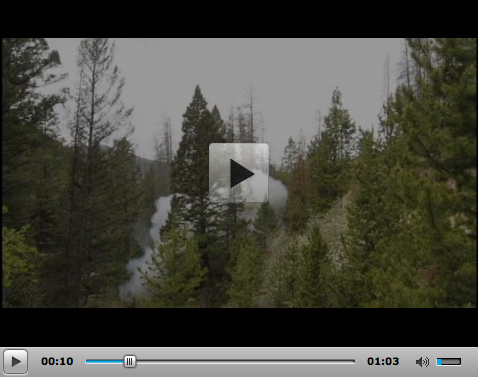In Catskill WoodNet News, I typically try to find links and resources that help the region's forest products industry be more competitive in this cutthroat 21st century marketplace. In the past, we've shared with you links such as Planning and Analysis in Timber Harvesting (a free cost-analysis tool for loggers) and DEC and NYS Ag and Markets articles dealing with Emerald Ash Borer regulations.
That stuff can get a little heavy after a while, so for this issue, I thought I'd lighten things up a bit the best way I know how - with explosives.
We all know hazard trees are dangerous (hence, "hazard" tree). Snags can behave very unpredictably, and they're often the cause of logging accidents. Out west, they're dealing with these dead trees more and more thanks to the voracious Mountain Pine Beetle. Letting all those dead trees stand presents a huge fire hazard, but logging in a stand of them is even more dangerous.
The Forest Service's solution? Shrink-wrap explosives to the bases of dead trees and watch them drop like dominoes.
 I found a pair of stories about this back in May in The Missoulian (here's the second one), and I had to share them. Apparently, the explosion can be controlled well enough that it doesn't just blow the tree to smithereens. Instead, it directionally fells the tree. If they do a good job placing the explosives, blasters (how's that for a job title?) can drop "50 trees at once, laying them 'like hair on a dog's back' for easy decking and removal."
I found a pair of stories about this back in May in The Missoulian (here's the second one), and I had to share them. Apparently, the explosion can be controlled well enough that it doesn't just blow the tree to smithereens. Instead, it directionally fells the tree. If they do a good job placing the explosives, blasters (how's that for a job title?) can drop "50 trees at once, laying them 'like hair on a dog's back' for easy decking and removal."
Don't believe me? The Missoulian posted this video of a blast in action.

Obviously, this isn't something for the uninitiated, and something tells me we won't be replacing chainsaws with explosives any time soon. Even so, leave it to OSHA to already have
standards for loggers working with explosives.
I'll leave you with this pearl of wisdom from one of the articles: "While the idea makes sense in theory, it takes a lot of on-the-ground practice before foresters feel safe to have it in their toolbox." Yeah, I'll bet.
All the best,